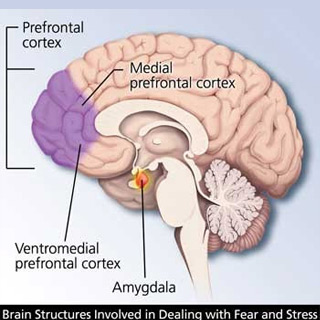
Researchers scrutinized the amygdala and the prefrontal cortex which are crucial brain regions for learning and stress. While the amygdale is a small almond-shaped structure located deep within the brain and senses stressful situations, the prefrontal cortex located in the front of the brain may be required for higher cognitive functions. It appears that both the structures are intimately connected to one another. During the research, male and female rats were exposed to stress and then presented with an associative learning task.
In the training rats were taught to link one event with another that occurred later. Tracey Shors, a professor of psychology in Rutgers School of Arts and Sciences and colleagues played a tone and stimulated the rats’ eyelids to elicit a blink. On taking the stimulus away, most of the male rats seemingly responded to the tone by blinking on their own. However, most females did not blink in response to the tone presumably showing that they had failed at learning that association. Connections between the prefrontal cortex and the amygdale were disrupted in some females. Apparently these females were able to learn the correlation.
The process did not report similar results for males, so females and males supposedly use different brain structures to learn after stress. Females may learn after stress if the prefrontal cortex can’t ‘talk’ to the amygdala. Therefore, males and females can use different brain circuits to learn after stressful life events. Sex differences in the brain probably explain why women are so sensitive to stress, and why they are more likely to suffer from stress-related diseases such as depression and post-traumatic stress disorder (PTSD).
The research was published on December 1 in the Journal of Neuroscience.
